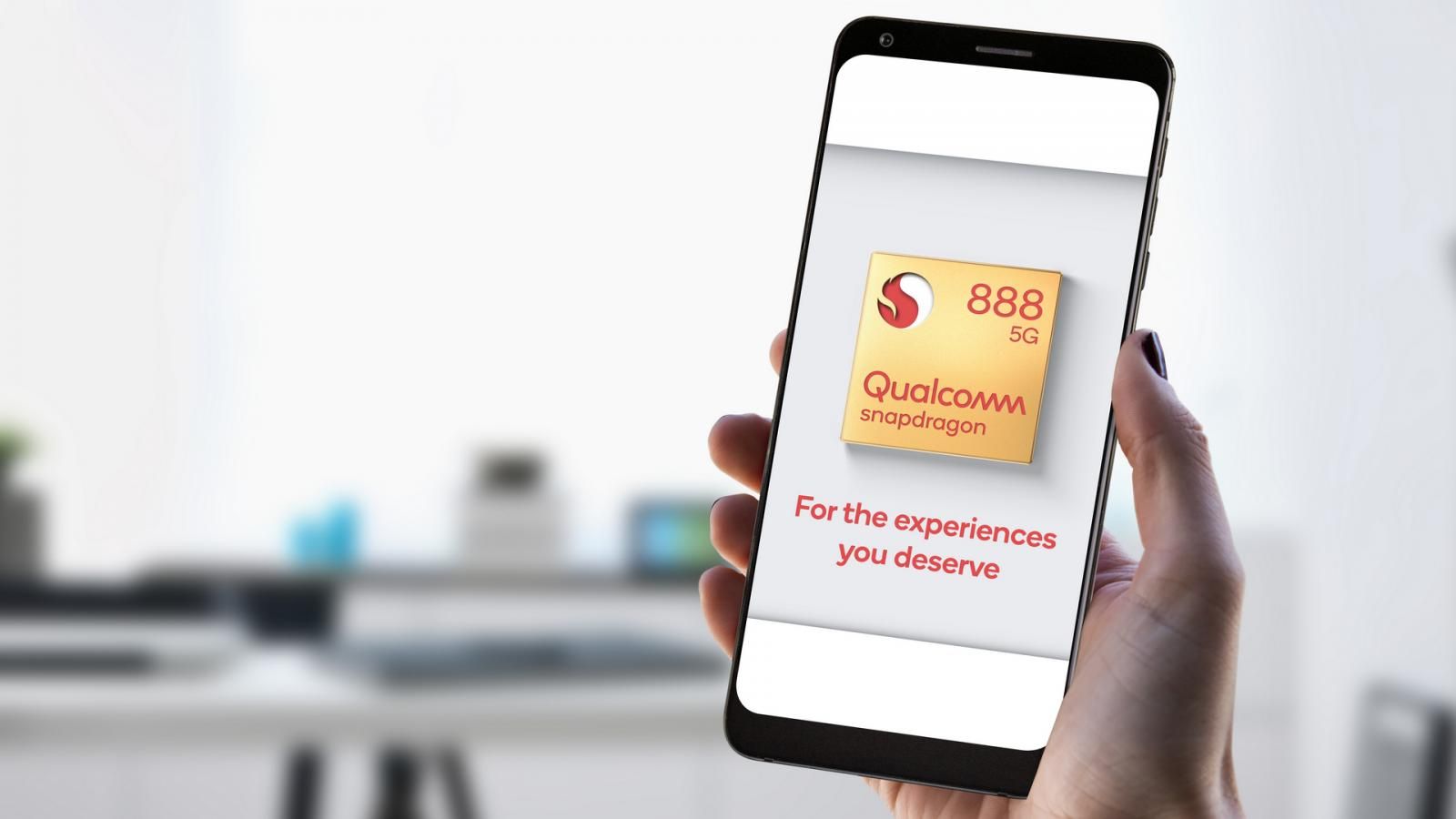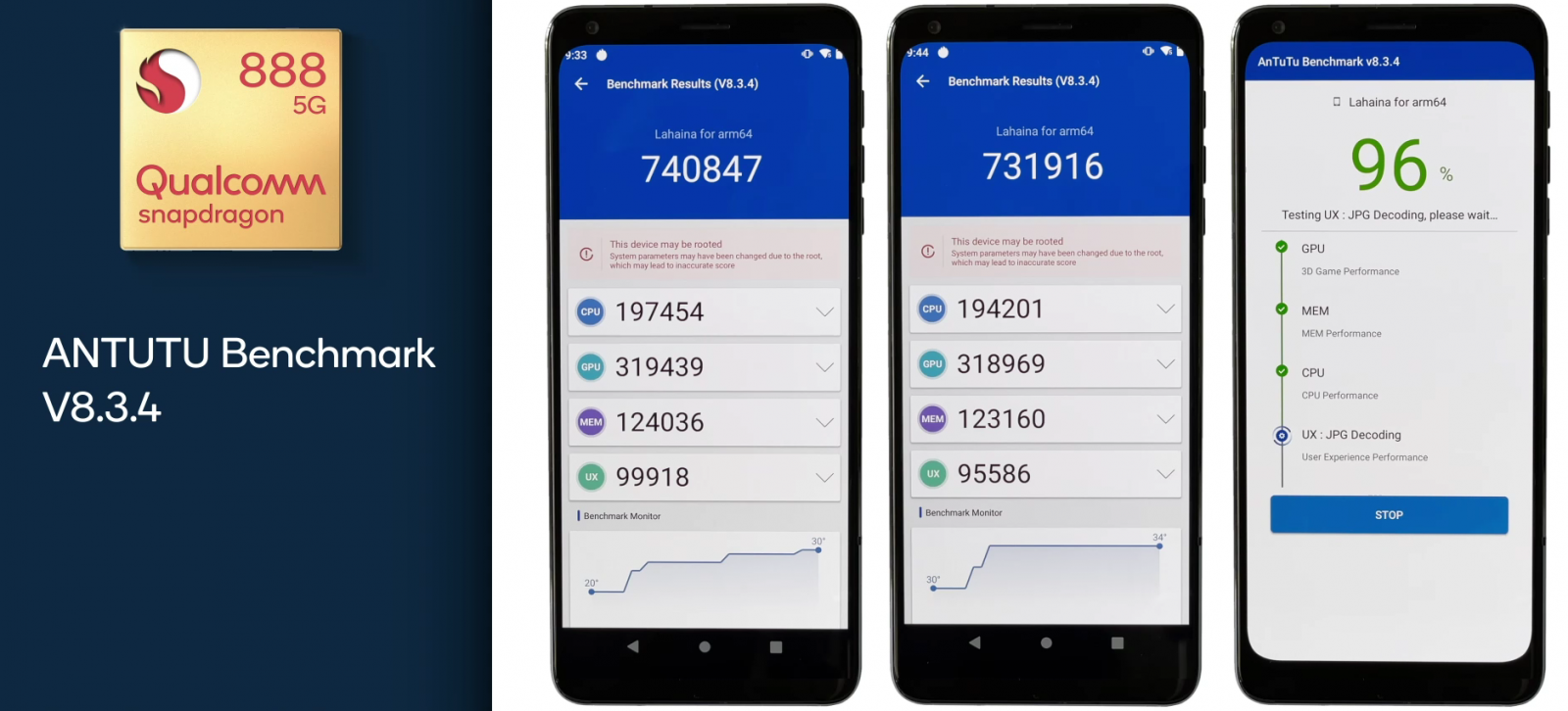Qualcomm has today released the benchmark scores of its latest top-tier smartphone chip – the Snapdragon 888 – that is going to power the 2021 Android flagships. As expected, the new Qualcomm offering provides a noticeable leap in performance over its predecessor, which is not too surprising. Of course, the Snapdragon 888 will also fly during day-to-day usage, and is capable of handling any demanding task or graphics-intensive game you throw at it with ease.
Before we get into the actual benchmark scores, do keep in mind that the tests were done on a reference device that came equipped with a hefty 12GB of LPDDR5 RAM, 512GB storage, 3,780mAh battery, and an FHD+ display with 120Hz refresh rate. The hardware almost sounds like a template for what we can expect to find inside a 2021 Android flagship.
The Qualcomm Snapdragon 888 scored 1135 in single-core and 3794 in multi-core Geekbench 5.0 tests, which is well above the average 980 single-core and 3200 multi-core Geekbench 5.0 scores of the Snapdragon 865+ inside the Galaxy Note 20 Ultra. In comparison, the A14 Bionic powering the iPhone 12 series clocked an average of 1580 in single-core and 3600 in multi-core Geekbench 5.0 tests.
Coming to the AnTuTu benchmark (v8.3.4), the Snapdragon 888 clocked an impressive 735439. In comparison, the Snapdragon 865+ inside the Galaxy Note 20 Ultra records an average AnTuTu score in the range of 700000. However, when it comes to graphics intensive tests, the Snapdragon 888 appears to lag behind A14 Bionic inside the iPhone 12 Pro.
Image Credit: Qualcomm
The benchmark sheet provided by Qualcomm shows that the Snapdragon 888 reference device clocked an average score of 169fps on the GFXBench Manhattan 3.0 test running at 1080p resolution in off-screen mode. In comparison, a test result ran on the iPhone 12 Pro shows that the A14 Bionic reached a much higher score of 210fps.
Now, these are test results obtained on a reference device, which means the results obtained on a commercially available Snapdragon 888 smartphone will vary. Also, Qualcomm has cherry-picked the benchmark tests whose scores it has shared, which means we’ll have to wait for the first wave of Snapdragon 888 phones to perform the rest of the tests and see the actual picture.



